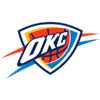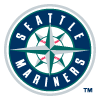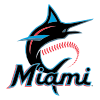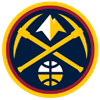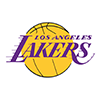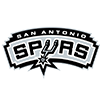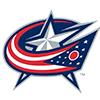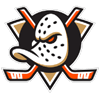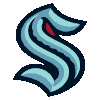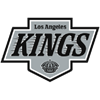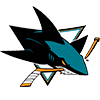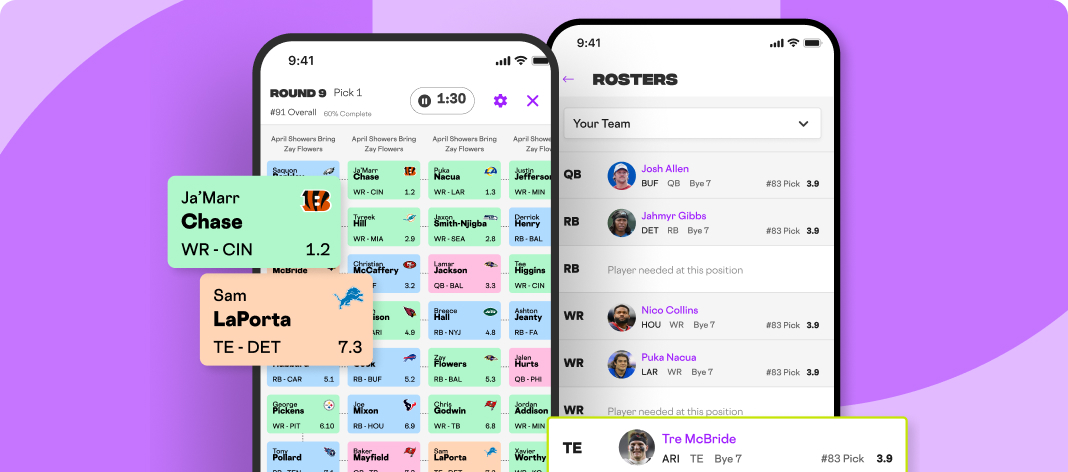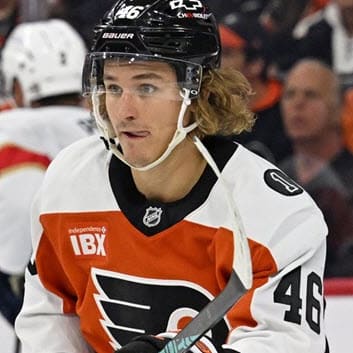The break is over, which means the stretch run is on. Before looking ahead, it's time to reflect on everything 4 Nations Face-Off this week. I've got a few thoughts on the tournament and what it means for future seasons.
Overall, it was a fun tournament. I had low expectations going in, and while there are still plenty of reasons I'm not fully onboard (more on that later), the games that I watched were enjoyable. About half of the games were close -- by having just four countries involved, there's less chance for those blowout matchups that are so frequent at the World Championship or World Juniors. The intensity was high too. I was never concerned about the quality of play. A chance to represent your country brings out the best in players. This was never going to be played at an All-Star-esque pace.
On the flip side, that intensity was reckless at times. The first USA-Canada game started with three fights in nine seconds. Fighting has its place, sure, but that's just stupid with the caliber of players involved. Fighting after big hits or for an energy shift in the middle of the contest? Understandable. Right off the draw? It's USA-Canada for crying out loud. If the players need a catalyst to get hyped for that, they should be asking why they're playing in the first place.
Then there's the injuries. Shea Theodore suffered an arm injury in Canada's opener. Charlie McAvoy's got an infection in his shoulder
The break is over, which means the stretch run is on. Before looking ahead, it's time to reflect on everything 4 Nations Face-Off this week. I've got a few thoughts on the tournament and what it means for future seasons.
Overall, it was a fun tournament. I had low expectations going in, and while there are still plenty of reasons I'm not fully onboard (more on that later), the games that I watched were enjoyable. About half of the games were close -- by having just four countries involved, there's less chance for those blowout matchups that are so frequent at the World Championship or World Juniors. The intensity was high too. I was never concerned about the quality of play. A chance to represent your country brings out the best in players. This was never going to be played at an All-Star-esque pace.
On the flip side, that intensity was reckless at times. The first USA-Canada game started with three fights in nine seconds. Fighting has its place, sure, but that's just stupid with the caliber of players involved. Fighting after big hits or for an energy shift in the middle of the contest? Understandable. Right off the draw? It's USA-Canada for crying out loud. If the players need a catalyst to get hyped for that, they should be asking why they're playing in the first place.
Then there's the injuries. Shea Theodore suffered an arm injury in Canada's opener. Charlie McAvoy's got an infection in his shoulder stemming from an injury sustained in the tournament. Sidney Crosby is still battling the issue he had prior to the tournament, though he didn't miss any time. Matthew Tkachuk's lower-body issue was a big storyline over the last two contests. Quinn Hughes didn't play at all, which is likely the right move for him and the Canucks. On top of all that, the tournament was overrun with an illness that went through all of the teams. Who knows how many other players played through issues that they likely would have rested at this time of year? I doubt Theodore's issue will cost Vegas their standing in the Pacific, and Crosby's presence isn't going to be enough to save the Penguins this year. The Panthers are probably safe too, with or without Tkachuk. In any case, you stage high-intensity games at this part of the year, and it's going to have the potential to dramatically impact the NHL's playoff race, and rarely will it be for the better.
So where do we go from here for international hockey? The NHL wants to establish February as an international month. The league is planning on contesting the World Cup of Hockey every four years, in between each Olympic break. International hockey is fun, and the Olympics will not move, but I hate this schedule. If every player's dream is a Stanley Cup -- as it should be -- participating in playoff-level hockey in February is counterintuitive to that goal. Imagine the outrage if Connor McDavid or Nathan MacKinnon broke a leg in 4 Nations play. Imagine if one of the injuries that did occur cost a playoff team a spot, or a favorable first-round matchup. We'll see what the rest of the season brings.
My opinion is worth as much as anyone else's, but I'd love to see these tournaments either after the Stanley Cup or in the first two weeks of October. The later the World Championship gets played, the better it will be for both the Stanley Cup Playoffs and the international stage. Sure, it's never best-on-best -- but when is any of this ever best-on-best? Injuries will always prevent it from being truly best-on-best. The alternative is early October. Give the players some time to get up to speed in camp, and while the run-of-the-mill NHLers fight for a roster spot with their teams, the stars can play international hockey for a couple of weeks. The NHL isn't using that part of the calendar anyway, aside from the Global Series games, which are even more of a gimmick than an international competition.
My secondary concern here is the NHL schedule. It's an embarrassment that the NBA can start its 82-game season a week or two after the NHL, and yet the NBA's regular season gets done first. That's even with the NBA Cup taking up space in the schedule. If the NHL won't start earlier in October, stop taking a massive break in February. These are the reasons why the Stanley Cup is being awarded closer to the Fourth of July than Memorial Day. Find a way to tighten the schedule up, and then figure out what to do with 4 Nations/World Cup/All-Star stuff. You'll get attention whenever these international games get played. The bonuses of an October tournament? A lot more recovery time for anyone who gets hurt, and all the joy of NHL players who aren't quite in form yet. Those early-season games always bring a little bit of high-scoring chaos. Imagine that for USA-Canada.
Now, since we're a little removed from NHL action -- aside from the games over the weekend -- let's take a look at some players who are more generally still underappreciated in fantasy this season. I try not to repeat players frequently, but this is the final push and it comes after a long break, so consider this a bit of a reset for the stretch run.
Dylan Holloway leads the pack for players to consider, as he's still out there in 48 percent of Yahoo formats. The goal scoring has dried up a bit -- he has just two tallies to go with seven assists, 29 shots and 45 hits over his last 15 contests. He's playing more than he ever has before, so that's likely taking a toll over the course of a full season. Still, he's a top-six power winger in the midst of a breakout campaign. His value's only going up if the Blues sell at the deadline -- he'll be around to fill a larger role.
Anders Lee is on a 30-plus-goal pace, and that should be enough to make him a fantasy target. Beyond that, he's still bringing decent physicality with over a hit per game. He's poised to pass the 50-point mark for the second time in three years, and 60 isn't out of the question if he's really strong down the stretch. The Islanders' playoff odds aren't great, so maybe Lee is a trade candidate. A change of scenery might help -- especially if he takes on a role with a strong power-play team.
Pierre-Luc Dubois is still taking care of business from the Capitals' second line. He picked up four assists over two games this weekend, showing no signs of slowing down after a two-week break. The 26-year-old has gotten on the scoresheet in 14 of 20 games since the start of January, earning 20 points over that span (eight goals, 12 assists). Playing on a strong team has bolstered his plus-minus, and while he doesn't shoot or hit a lot, he's on track for a career-high in blocked shots while sticking tracking toward a return to the 60-point threshold. He's even got left-wing eligibility in Yahoo, so his performance comes with the benefit of a little versatility.
Marco Rossi was limited to one goal over four games to begin February, but he came out of the 4 Nations break with a two-point effort in a comeback win. Kirill Kaprizov (lower body) could be out longer than expected, but Rossi has held his own without his superstar teammate. The break likely allowed the 23-year-old center to refresh. He's got a 20-goal, 49-point line through 57 appearances. The 30-goal mark is a long shot, but 70 points is within reach. Rossi has a bit of a red flag with a 19.8 shooting percentage and doesn't add a lot of non-scoring production, but the offense alone is strong.
Fabian Zetterlund doesn't get the same type of attention as other young forwards on the Sharks. At 25 years old, he's not a prospect anymore. He's developed into a good complementary piece on a rebuilding team, serving as a power winger. He's 20 games removed from his last multi-point effort, but he has 32 hits and 49 shots on net in that span, so the slide on offense is a product of bad luck to some extent. He can be useful in a variety of ways -- stream him for a boost in hits and shots, or keep him around when the schedule is soft to provide a boost of offense.
I've had a fun time following Kiefer Sherwood's unique path to history this season. With nine hits Saturday, he crossed the 300 mark for the season, and he's at 307 through Sunday's action. Obviously, he needs to be rostered in any format that counts hits. He's not an anchor on your offense either -- he's chipped in 23 points over 53 appearances, four shy of his career-high total from 68 games last year. The Canucks are still mixing and matching wingers and centers, and Sherwood occasionally gets to play with Elias Pettersson. If he sticks there, he's in for a good end to the campaign, which will likely see him put up the first recorded 400-hit season in NHL history.
Speaking of physicality, take a look at Brayden McNabb. He's not much of a scorer with 12 points over 57 appearances, but he has 125 blocked shots and 96 hits, as well as a plus-31 rating. His physical play is actually noticeably down compared to last year's 148-hit, 207-block performance, but his defense is sound. He'll be leaned on even more to shut things down as long as his regular defensive partner, the aforementioned Shea Theodore, is out of the lineup. In my home league's scoring system, he's just outside the top 100, and while he's gotten there in a much different way, he's returned value almost equivalent to Gustav Forsling. If you need a one- or two-category specialist, McNabb is a fine choice.
In many ways, Esa Lindell can fill a similar role for your fantasy team. What I like about Lindell for the next month or so is that he'll have more minutes while Miro Heiskanen (knee) is out. Lindell is always a decent depth option in fantasy -- he's topped 20 points in six of the last seven seasons, the exception being the 56-game 2020-21 campaign. He's one point shy of that mark again, and he's among the best shot-blockers in the league. He's also plus-21, which is a great number despite not being among the league leaders. He's not the player that will win you a league, but he can stabilize your production in some areas to allow you to focus on upgrades elsewhere.
Kevin Lankinen is not an unknown, but my confidence in him is incredibly high right now. Thatcher Demko (lower body) is hurt again. Lankinen just signed a five-year deal -- the Canucks don't offer him term like that if they view him as a pure backup. He's the starter in Vancouver until Demko is healthy, and it'll probably be closer to a 50-50 split if Demko returns during the regular season. Lankinen has been a nose better than Ilya Sorokin this season. He's a No. 2 in fantasy when he's starting and a No. 3 option when splitting time, but he needs to be rostered in a lot more than 60 percent of leagues.
Lukas Dostal was on a five-game winning streak, having allowed just nine goals in that span before a dud against Detroit on Sunday. John Gibson suffered an upper-body injury Saturday in Boston. You know where this is going. Gibson has had trouble staying healthy, especially late in the season, over the last two years. The Ducks won't be playoff competitive, but they're no pushovers. Dostal has emerged as a fantasy netminder in all formats, and his stock only goes up if his workload increases. He's maintained a .910 save percentage despite the Ducks allowing a league-high 32.3 shots per game. Wins won't be easy, but he can pile up saves and stabilize ratios as a No. 2 or No. 3 fantasy goalie.
With the break over, it's a two-month grind to the end of the NHL season. In most formats, you've got two to four weeks to solidify your fantasy team's spot. Trade deadlines, both virtual and actual, are rapidly approaching, so test the market. Right now, you want players who are sure things as much as possible. The time for waiting and seeing if they can turn it around is over. Don't bother speculating on who's going to land where for the NHL trade deadline either -- there's a time to be proactive, but most of that should be on the selling side if you think a player is going to get a downgrade following a deal.
On the flip side, the 4 Nations break created a unique scenario this season. Momentum is tough to maintain after two weeks off, and the players who stayed in a playing rhythm are largely not ones you're shuffling on or off your roster. Next week, I'll take a look at players who have turned hot following the break. Keying in on those guys quickly will be what sets you apart from the competition in the push for fantasy glory.








